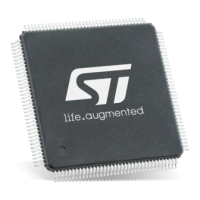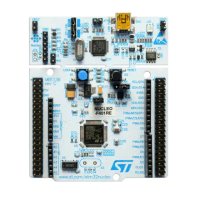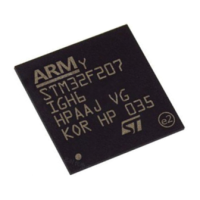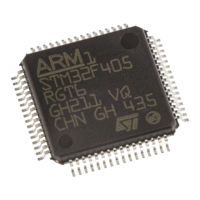2 Terminology and principle
2.1 Terminology
The touch sensing most relevant acronyms are described below:
• Acquisition mode
– CT: Charge-Transfer acquisition principle. This mode is used on STM32 microcontrollers.
• Touch sensing STM32 peripheral
– TSC: touch sensing controller peripheral
– Bank: set of channels acquired simultaneously
– Channel: elementary acquisition item
– Group: set of 1..3 channels plus 1 sampling capacitor (Cs)
• Sensors
– Touchkey or TKey: single channel sensor
– Linear sensor: multi-channels sensor with the electrodes positioned in a linear way
– Rotary sensor: multi-channels sensor with the electrodes positioned in a circular way
– Active shield: track running along or copper plane surrounding the sensor track and/or sensor itself.
Active shield is driven similarly to the sensor. Improve noise robustness without decreasing the
sensitivity.
• STM32 software
– TSL: touch sensing library
– Delta: difference between the measure and the reference
– Measure or meas: current signal measured on a channel
– Reference or ref: reference signal based on the average of a sample of measures
– DTO: detection time out. Time out is defined by TSLPRM_DTO. See TSLPRM_DTO in tsl_conf.h file.
– DXS: detection exclusion system. Exclusion system is defined by TSLPRM_USE_DXS. See
TSLPRM_USE_DXS in tsl_conf.h file.
– ECS: environment change system. See TSLPRM_ECS_DELAY in tsl_conf.h file.
• Hardware Involved
– Cx: sensor capacitance (typical value is few pF)
– Cp: parasitic capacitance (typical value few pF)
– Ct: equivalent touch capacitance
– Cs/Cskey/Csshield: sampling capacitor (typical value from 2.2 to 100nF)
– Rs/Rskey/Rsshield: serial resistor, ESD protection (typical value from 100Ohms to 10K)
2.2
Principle
The STM32 touch sensing feature is based on charge transfer.
The surface charge transfer acquisition principle consists in charging a sensor capacitance (Cx) and in
transferring the accumulated charge into a sampling capacitor (Cs).
This sequence is repeated until the voltage across Cs reaches V
IH
.
The number of charge transfers required to reach the threshold is a direct representation of the size of the
electrode capacitance. When the sensor is touched, the sensor capacitance to the earth is increased. This mean
the C voltage reaches V
IH
with less count and the measurement value decreases. When this measurement goes
below a threshold, a detection is reported by the TSL. The schematic below do not take into account the parasitic
capacitor.
AN5105
Terminology and principle
AN5105 - Rev 1
page 3/52
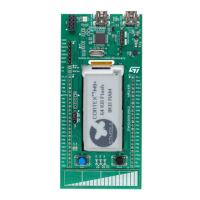
